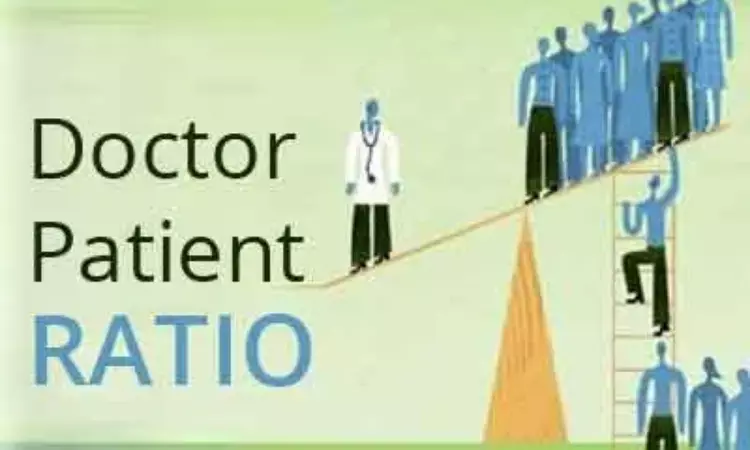- Home
- Medical news & Guidelines
- Anesthesiology
- Cardiology and CTVS
- Critical Care
- Dentistry
- Dermatology
- Diabetes and Endocrinology
- ENT
- Gastroenterology
- Medicine
- Nephrology
- Neurology
- Obstretics-Gynaecology
- Oncology
- Ophthalmology
- Orthopaedics
- Pediatrics-Neonatology
- Psychiatry
- Pulmonology
- Radiology
- Surgery
- Urology
- Laboratory Medicine
- Diet
- Nursing
- Paramedical
- Physiotherapy
- Health news
- Fact Check
- Bone Health Fact Check
- Brain Health Fact Check
- Cancer Related Fact Check
- Child Care Fact Check
- Dental and oral health fact check
- Diabetes and metabolic health fact check
- Diet and Nutrition Fact Check
- Eye and ENT Care Fact Check
- Fitness fact check
- Gut health fact check
- Heart health fact check
- Kidney health fact check
- Medical education fact check
- Men's health fact check
- Respiratory fact check
- Skin and hair care fact check
- Vaccine and Immunization fact check
- Women's health fact check
- AYUSH
- State News
- Andaman and Nicobar Islands
- Andhra Pradesh
- Arunachal Pradesh
- Assam
- Bihar
- Chandigarh
- Chattisgarh
- Dadra and Nagar Haveli
- Daman and Diu
- Delhi
- Goa
- Gujarat
- Haryana
- Himachal Pradesh
- Jammu & Kashmir
- Jharkhand
- Karnataka
- Kerala
- Ladakh
- Lakshadweep
- Madhya Pradesh
- Maharashtra
- Manipur
- Meghalaya
- Mizoram
- Nagaland
- Odisha
- Puducherry
- Punjab
- Rajasthan
- Sikkim
- Tamil Nadu
- Telangana
- Tripura
- Uttar Pradesh
- Uttrakhand
- West Bengal
- Medical Education
- Industry
13 lakh Plus Registered Allopathic doctors, 596 Medical Colleges in India: Health Minister

New Delhi: As of November 2021, the number of registered medical practitioners in India is more than 13 lakhs, informed Dr. Bharati Pravin Pawar, the MoS Health.
The Minister of Health has further informed the upper house of the Parliament that the doctor-patient ratio in India is 1:834, better than WHO recommendation, assuming 80% availability of registered allopathic doctors and 5.65 lakh AYUSH practitioners.
"The doctor-population ratio as per WHO recommendation is 1:1000. As per information available, there are 13,01,319 allopathic doctors registered with the State Medical Councils and the National Medical Commission (NMC) as on November, 2021. The doctor-population ratio is 1:834 in the country assuming 80% availability of registered allopathic doctors and 5.65 lakh AYUSH doctors," the Minister informed recently while responding to some questions concerning the Doctor to Patient ratio in India.
The questions that were asked to the Minister included if the Doctor-patient ratio in India is below the WHO standards, the details of the doctor-patient ratio in urban and rural areas of the country, steps that the Government is taking to increase the availability of doctors etc.
Medical Colleges in India
After giving details regarding the doctor-patient ratio in India, the Minister of Health further pointed out that there are 596 (313 Government + 283 Private) medical colleges including AIIMS in the country with an intake capacity of 88120 MBBS seats.
Further referring to the steps for increasing the availability of doctors in India, the Minister stated that "The numbers of PG seats have increased by 78% from 31,185 seats before 2014 to 55,595 seats including DNB and CPS seats. The number of UG seats have increased from 51,348 before 2014 to 88,120 seats as of date which is an increase of 72%."
The steps to increase the seats, as mentioned by the Minister, include: -
"i. Centrally Sponsored Scheme for establishment of new medical college by upgrading district hospital under which 157 new medical colleges have been approved and 70 are already functional.
ii. Centrally Sponsored Scheme for strengthening/ upgradation of existing State Government/Central Government Medical Colleges to increase MBBS and PG seats.
iii. Central Sector Scheme for upgradation of Government Medical Colleges by construction of Super Specialty Blocks. A total of 75 projects have been approved and 53 have been completed.
iv. Under Central Sector Scheme for setting up of new AIIMS, 22 AIIMS have been approved. Undergraduate courses have started in 18 AIIMS.
v. Relaxation in the norms for setting up of Medical College in terms of requirement for faculty, staff, bed strength and other infrastructure.
vi. Enhancement of maximum intake capacity at MBBS level from 150 to 250.
vii. DNB qualification has been recognized for appointment as faculty to take care of shortage of faculty.
viii. Enhancement of age limit for appointment/ extension/ re-employment against posts of teachers/dean/principal/ director in medical colleges upto 70 years.
ix. The ratio of teachers to students has been rationalized to increase the number of postgraduate medical seats in the country.
x. By amending the regulations, it has been made mandatory for all medical colleges to start PG courses within 3 years from the date of their MBBS recognition /continuation of recognition.
xi. Provision has been made in the Regulations to offer less number of seats to the applicant medical college, in case, it falls short of minimum prescribed requirements of applied intake to avoid wastage of human resources."
To view the official Notice, click on the following link:
https://medicaldialogues.in/pdf_upload/au284-165321.pdf
Also Read: 23 medical colleges sanctioned in Rajasthan in last 3 years, 7 recognised: MOS Health
Medical Dialogues consists of a team of passionate medical/scientific writers, led by doctors and healthcare researchers. Our team efforts to bring you updated and timely news about the important happenings of the medical and healthcare sector. Our editorial team can be reached at editorial@medicaldialogues.in.


